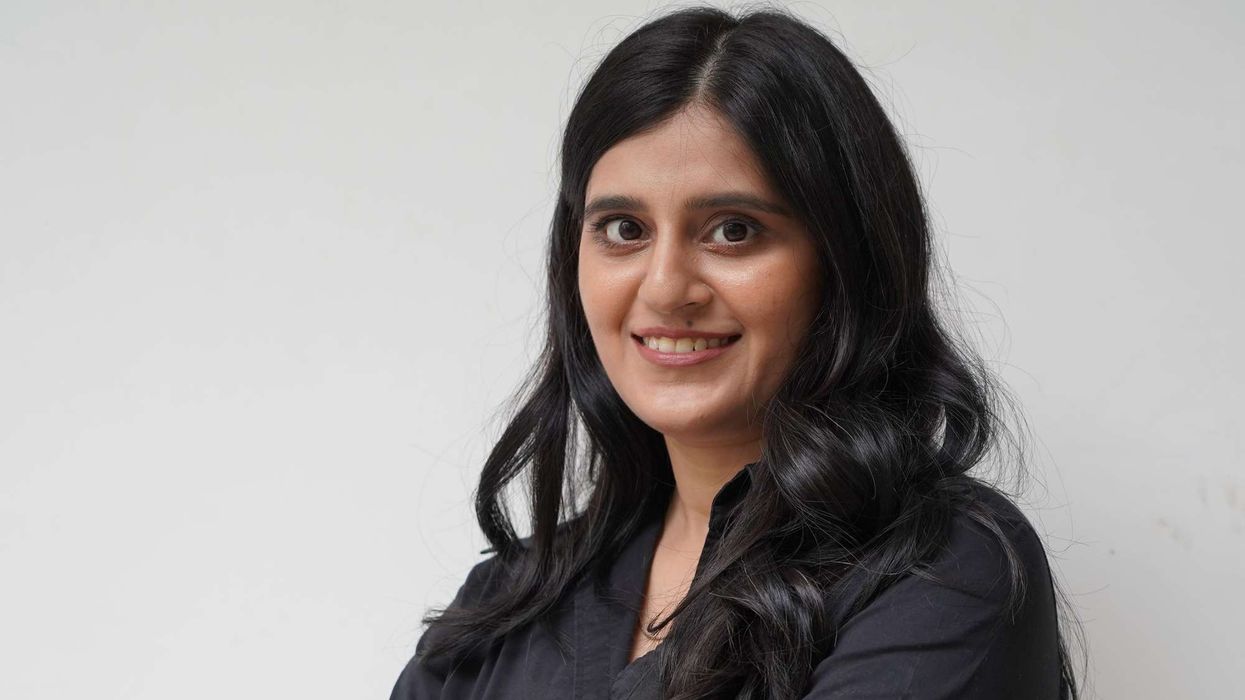by ASJAD NAZIR.
ONE of the dream musical teams of recent years has been India-based singer Zora Randhawa and chart topping British music producer Dr Zeus.
Together the close friends have delivered some super hit songs, including a stunning
collaboration with hip hop legend Snoop Dogg earlier this year.
The duo headlined the recent Newham Under The Stars concert and delivered a blockbuster
performance with a live band. They are looking forward to the release of their next song
Gwandian Da Dhol.
I caught up with Zora to talk about music, working with Dr Zeus and more.
When did you first become connected to music?
I was seven years old when I performed for the first time – it was a school annual function in grade three. My musical influences growing up were Mohd Rafi and Surjit Bindrakhia.
How did you feel at the release of your first song?
I was over the moon and over-excited. (Laughs) I was worried too, but it all worked out.
Which of your songs would you say has given you the greatest joy?
All the songs that I have sung until now have given me different kinds of joy. I have sung eight songs and spent a good three to four months on a single track. So all my songs are really close to my heart.
Can you tell if a song will be a hit in the studio?
Not really, but you can feel the vibes.
You have had amazing successes with Dr Zeus, but what is he like to work with?
It’s a great feeling working with a legendary producer like Dr Zeus. I was always a great fan of his so it was like a dream come true to work with him. Today he is like a brother to me. I think we work together really well because of the chemistry and understanding
we share. (Smiles) We are like jodi number one.
What was it like doing the song Woofer with Zeus and Snoop Dogg?
It was another a dream come true moment for me, working with two of the biggest superstars in the world of music.
How much does performing live mean to you and which of your live concerts has been the most memorable?
I prefer live performances over a PA. I think you get more freedom while performing live. I have done live shows at many places like India, England, Toronto and the experience has been really great every single time.
Which has been the most interesting destination your musical journey has taken you to?
I have been to a lot of places for work, but the experience in Kenya was a crazy one. It was for the wedding of a member of the richest Punjabi families living there, and was great fun.
What is your greatest musical ambition?
I don’t have any ambitions or plans away from music. It is my only focus. I want to keep working hard and leave it in the hands of god, and my fans.
What kind music dominates your play list?
Every type of good music from different genres is in my play list. At times it even depends on my mood and the artists.
Who would you love to collaborate with?
I have been blessed to do some major collaborations in my career so far and have more on the way. You will find out soon.
What are your biggest passions away from music?
(Laughs) I always wanted to be a FBI officer.
Today what inspires you?
My family and fans inspire me most.
If you could ask any artist, alive or dead, a question, who would it be and what would you ask?
I would have asked Michael Jackson to collaborate
with me.
What can we expect from you next?
Another hit with Gwandian Da Dhol.
Finally, why do you love music?
I can’t live without music.
- DR ZEUS ON ZORA
“There are plenty of talented artists out there, but very few like Zora, who combine a natural ability with hard work and a hunger to be the best they can. We work well together because both of us want the very best.
“He is also a great human being and has remained grounded despite the global success. He still has the same hunger as when he did with the first track and I think that will remain for a long time to come, and why he will continue delivering hits.
“Also, Zora has been with me through thick and thin, including during hard times, like a
true brother from another mother.”
KAJOL’S FILM GROUNDED
I HAVE never seen Kajol do as much promotion for a movie as she has done with Helicopter Eela.
A few months ago she was giving interviews to everyone ahead of the movie being
released on September 7, but all that seems to have gone to waste because it has been postponed to October 12. The main reason being cited is the ill health of director
Pradeep Sarkar, but if the movie was shot many months ago, why are the filmmakers still doing post production just a few weeks before the release?
I think this will badly damage a movie that was already struggling to get attention and it will be a major misfire when it comes out.
NEHA: WEDDING RUSH
ACTRESS Neha Dhupia shared a heavily pregnant photograph of herself with husband Angad Bedi on social media, but this led to her being bombarded with jokes because she only got married recently.
Most pointed out that the Bollywood star had a surprise wedding in May because most likely she was already expecting.
Shortly after sharing the news, the couple walked the ramp together as showstoppers for fashion designer Payal Singhal at the Lakmé Fashion Week in Mumbai.
JHANVI ON THE CATWALK
RISING star Jhanvi Kapoor followed up her recent Bollywood debut in Dhadak by making her first appearance on the catwalk as a showstopper for designer Nachiket Barve at the Lakmé Fashion Week in Mumbai.
The 21 year-old admitted to being afraid of tripping because the outfit looked heavy, but
was relieved it was light and comfortable when she put it on.
Next up for the daughter of late great star Sridevi is a starring role in Karan Johar’s next directorial outing Takht alongside Ranveer Singh, Kareena Kapoor Khan, Alia Bhatt, Vicky Kaushal, Bhumi Pednekar and Anil Kapoor.
SONAKSHI: NOT SO HAPPY NEWS
ACTRESS Sonakshi Sinha continued her poor run at the box office with her recently released misfire Happy Phirr Bhag Jayegi.
The comedy sequel clocked up low numbers as I expected, and I am beginning to wonder
why she gets so many chances despite her flop films. It seems as if producers haven’t learned their lesson because she has more movies on the way. Those filmmakers
should instead cast television actresses who have bigger fan bases and are more talented
performers.
END OF THE KAPOOR ERA
WHEN late great Bollywood legend Raj Kapoor passed away, he left behind an incredible
empire that included a huge studio complex, massive fortune, a flourishing film banner, palatial house and a phenomenal legacy.
But his three sons Rishi, Randhir and Rajiv Kapoor have all but destroyed that. Film production stopped,they sold off the house their father left his wife, let the studio go into disrepair, lost all the iconic film props in a fire and more. They are now selling the one remaining asset, the studio, despite repeatedly boasting they would resurrect the banner.
When the history of the Kapoors is written, it will tell of how a father built a magnificent
empire and the sons let it fall.
SHAH RUKH DROWNING IN FLOOD OF FAKE NEWS
KERALA has not only had to battle floods, but also fake news stories that have swept across social media.
One obviously false story was that Shah Rukh Khan had personally donated around £550,000 to flood relief in the state, when in fact it was his charity that had handed
over just over £23,000.
Shah Rukh’s die-hard fans were, of course, not willing to believe the truth and were hurling insults despite various media confirming the sum of £550,000 as being fake.
I have been reporting on Shah Rukh since 2001, but have seen more rumours about him this year than the previous 17. All those fans who are spreading false news are harming
a brand the A-list star has worked so hard to build.





 Neha Nagar Neha Nagar
Neha Nagar Neha Nagar  Neha Nagar
Neha Nagar Neha Nagar
Neha Nagar






